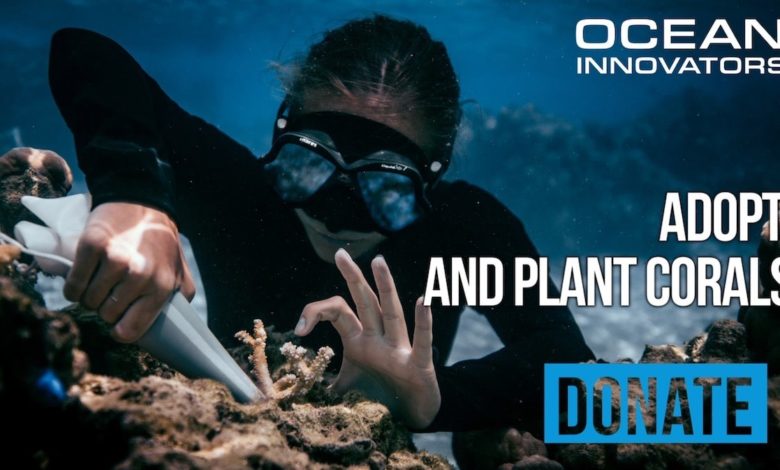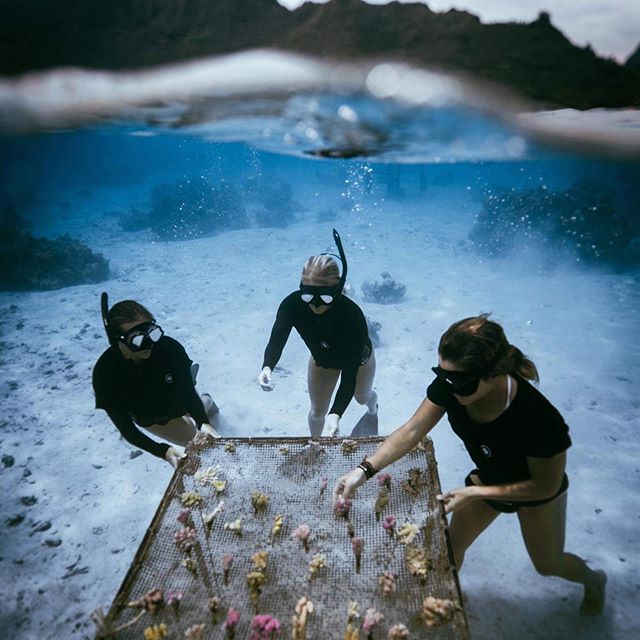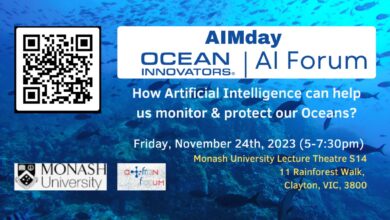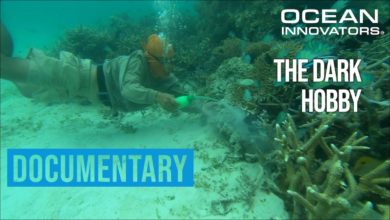Coral Gardeners: saving the reef, one coral at a time

- The purpose of Coral Gardeners
- Why are coral reefs so important?
- Coral restoration techniques
- How to help?
According to the United Nations, 70% of the Earth’s coral reefs are threatened; 20% have already been destroyed with no hope for recovery, 24% are under imminent risk of collapse, and an additional 26% are at risk due to longer-term threats. There is now a call to protect and conserve the home of one quarter of all known marine life. How important are coral reefs for our ocean ecosystems? Can we save coral reefs? How can individuals contribute to the protection and conservation efforts?
The purpose of Coral Gardeners
Coral Gardeners is an organisation in French Polynesia aiming to save coral reefs. Marie-Celine Piednoir shares some insights into their work with Ocean Innovators®. Coral reefs are estimated to die by 2050, so their mission is to restore reefs while also raising awareness about corals through social media and communication. Coral Gardeners are active in Mo’orea in French Polynesia and every single day, their reef restoration team goes into the water to replant corals onto the reefs. Knowing that the process alone is not enough to save the reefs, the team also concentrates its efforts on spreading the word about the importance of coral reefs.
Why are coral reefs so important?
A coral is in fact an animal. Corals are like the trees of the sea. We know how crucial trees are to the survival of land-based species. Similarly, corals are responsible for producing half of the oxygen on Earth. Corals also contribute to the physical structure of reefs, which are the habitat of thousands of marine species. Hence, without this huge ecosystem, many marine species would die and lots of other dependent ecosystems would disappear.
The biggest challenge is global warming. If the temperature of the water rises by 1 or 2 ℃ – and unfortunately this is already happening now – the corals die. This phenomenon is known as coral bleaching. During this process, the living parts of corals – algae called zooxanthellae – are expelled, leaving behind a dead skeleton. Corals that appear white or bronze are already dead. Other factors such as pollution, ocean acidification, and human disruptions also trigger coral bleaching.
Coral restoration techniques
Coral Gardeners have two main restoration techniques. The first one is called fragments of opportunity. The team goes on the reef and collects fragments that break off by waves, by boats, or by tourists. They collect those fragments and place them onto a nursery. They wait for them to start growing again, and then pick up those fragments and place them onto coral potatoes. The next step involves cementing these fragments back onto the reefs.

“From damaged pieces of coral, flourishing reefs may rebound. The fragments of our nursery can start to recover and blossom before replanting. Every coral fragment planted has a second chance to be part of reefs that can continue to grow for centuries, even millennia – bringing abundance to the ocean.”
@coralgardeners
The second technique is to grow super corals. Coral Gardeners are aware that the replanted corals will die again in future bleaching events. So, they are working on selecting more heat-resistant corals called super corals. Thanks to monitoring and scientific data, they can spot potential super corals that have already resisted past bleaching events. They take the super corals and put them onto Coral Gardener nurseries. Six months to one year later, once they grow again, those corals have fragmented again and replanted onto the reef. Coral Gardeners have just started this technique and aim to only go towards super corals in the future.
How to help?
Coral Gardeners, like many organisations, need funding to be successful in their mission. Their main way of funding projects is through coral adoption. It’s a super cool concept where anyone can adopt a coral. In an easy online process costing only AU$ 28, you can adopt a coral that you can name yourself! You receive an adoption certificate with the name and picture of the coral, and the geolocation of the nursery table. It is also a fabulous gift idea for someone who is passionate about ocean conservation.
Marie-Celine Piednoir encourages you to adopt a coral and help save the reef. Coral Gardeners’ vision is to create a Coral Gardeners community worldwide, allowing people to support the United Nations Sustainable Development Goal #14, Life Below Water. You can dive into the world of coral conservation by visiting their website, or Coral Gardeners’ social media platforms: Twitter, Facebook, LinkedIn, Instagram, YouTube.







